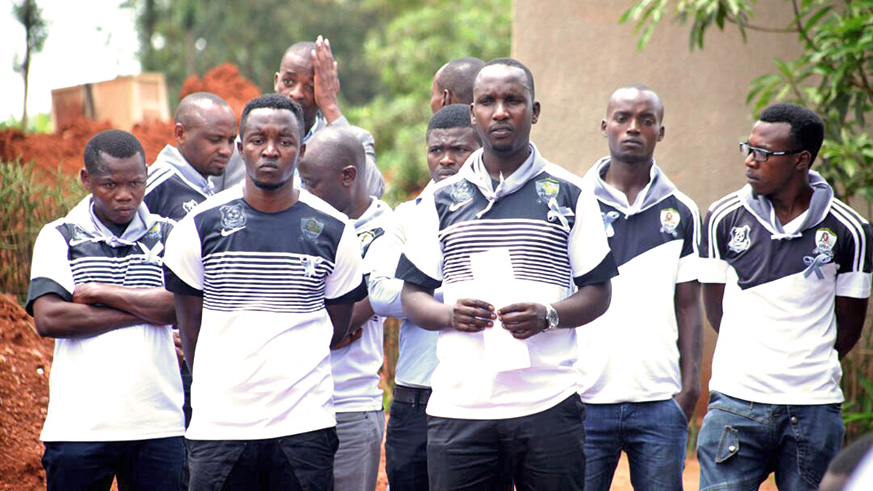

The 1994 Genocide against the Tutsi did not only lead to loss of life but also made survivors homeless as killers burnt houses of the people that they had killed.
Fifty-five-year-old Espérance Kanakuze, is among the thousands of Genocide survivors whose entire families were annihilated during the Genocide. She lost her husband, two sons and her extended family.
The people who killed her family did not just stop at that but also burnt down her modest house which rendered her homeless. For the last 24 years, she has been living with another Genocide survivor who also lost his family but was lucky enough not to lose the house.
Although Kanakuze is very appreciative of her neighbour and friend who took her in and helped her for many years, she wanted a house of her own and is grateful to APR fans group which made that wish a reality.
"Ever since I lost my husband, children and relatives in the Genocide, I have lived a hopeless life. I became lonely and desperate, mostly because I was afraid. I felt inferior but I now have hope, thanks to these people who are changing my life,” she said
"I will now be able to walk with my head held high. I now feel good that I will be living in a decent house. I am very happy,” Kanakuze added.
The chairman of APR fans club, Edmund Kazungu, thanked the fans who contributed over Rwf2m and manpower to build the house saying it is the least they could do to help such people in need.
"It is a sign of development when such Genocide survivors who had lost hope of ever living happily are supported by other Rwandans. Our ability to lift each other demonstrates the spirit of patriotism that Rwandans have,” Kazungu said
Kanakuze lived in Ntarama during the Genocide where 5,000 people were killed. The killings started on April 7, 1994 with the setting ablaze of Tutsi homes. Although local farmers in Ntarama tried to put up some resistance, the Interahamwe militia called for reinforcements from other Bugesera-based militia.
Some people tried fleeing to Ntarama church but this was a futile attempt as the Interahamwe and government soldiers pursued them there and were killed with machetes.
APR supporters also visited Ntarama Genocide memorial site which used to be a church but was converted into a Genocide memorial site on April 14, 1995 and is dedicated to the 5,000 people who lost their lives there.
It contains human remains, clothing, and other artifacts that belonged to those who were killed at the church.
editorial@newtimes.co.rw


